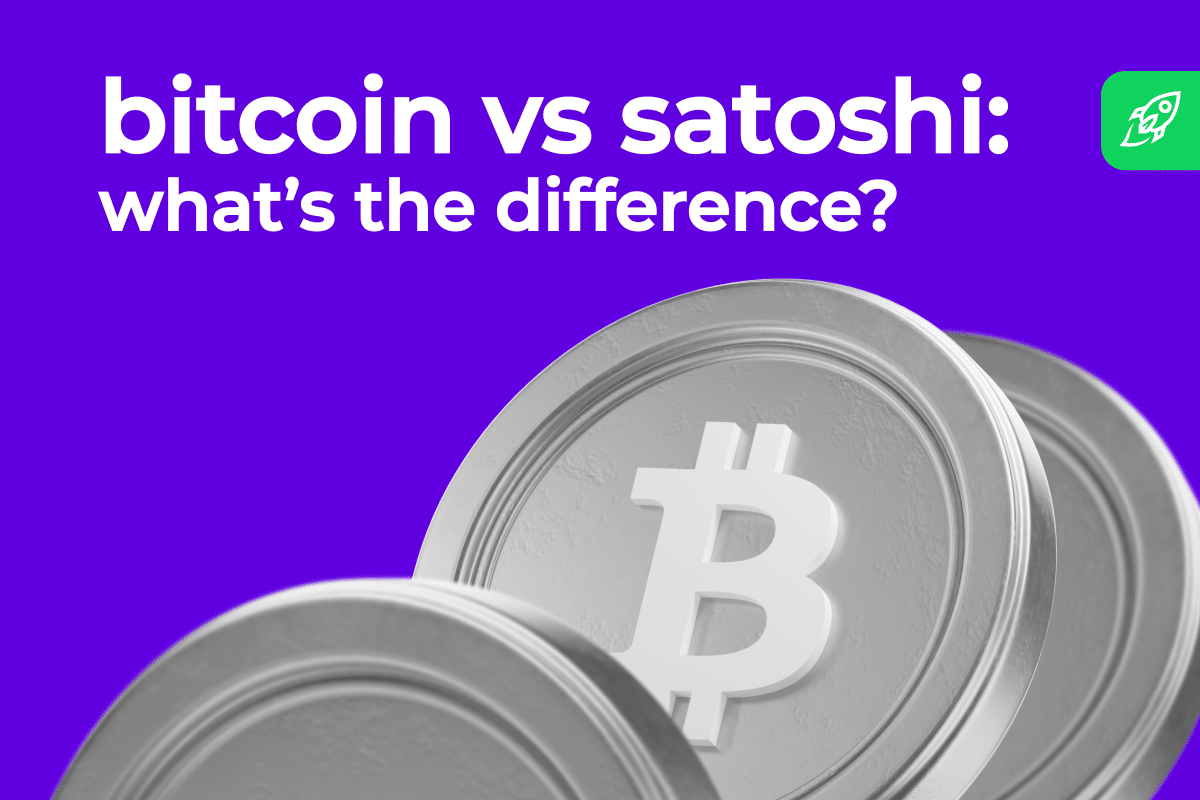Bitcoin has fundamentally changed the way we think about money, and one of its most interesting aspects is its divisibility. While most people know Bitcoin as a single unit, it can actually be broken down into much smaller parts called “satoshis.” This unit makes Bitcoin accessible to more people by enabling microtransactions and small investments.
Let’s dive into everything you need to know about satoshis, from their origins to how they’re used today.
What is a Satoshi?
A satoshi is the smallest divisible unit of Bitcoin, named in honor of its mysterious creator, Satoshi Nakamoto. It’s a similar system to fiat currencies – just as cents are to dollars, satoshis are to Bitcoin. The beauty of satoshis lies in their ability to allow transactions involving fractions of a Bitcoin, making it easier for everyone to participate, regardless of how much they want to invest.
For example, if you want to send just a small amount of Bitcoin to buy a coffee, you would likely send a few thousand satoshis instead of a whole Bitcoin.
How Many Satoshis Are in a Bitcoin?
One Bitcoin (BTC) consists of 100 million satoshis. This means that, in smaller amounts, even owning just 0.01 BTC equates to owning 1 million satoshis. Here’s a breakdown for perspective:
1 Bitcoin (BTC) = 100,000,000 satoshis
0.5 BTC = 50,000,000 satoshis
0.01 BTC = 1,000,000 satoshis
This divisibility ensures that as Bitcoin’s value rises, it remains usable in smaller, more affordable increments, making everyday transactions more practical.
How many satoshis are in a Bitcoin – satoshi converter
History of the Satoshi
The “satoshis” was created to address the need for microtransactions within Bitcoin’s system. As Bitcoin’s value increased, transacting in whole Bitcoins became impractical for everyday purchases. Introducing satoshis allowed Bitcoin to be more versatile, enabling its adoption in a wider variety of economic scenarios.
The term “satoshi” carries significant weight in the realm of cryptocurrency, primarily linked to Satoshi Nakamoto, the pseudonymous person or group who created Bitcoin in 2008.
Where Did the Name Satoshi Come From?
The name “satoshi” originates from Satoshi Nakamoto, the enigmatic figure credited with creating the Bitcoin blockchain and publishing its foundational white paper in 2008. Nakamoto’s revolutionary work laid the groundwork for the entire cryptocurrency ecosystem, fundamentally transforming how digital transactions are conducted. Naming the smallest Bitcoin unit after Nakamoto reflects the community’s appreciation for their revolutionary vision.
The impact of Satoshi Nakamoto’s contributions extends well beyond the inception of Bitcoin, influencing the design, development, and adoption of countless other cryptocurrencies. Nakamoto’s vision not only catalyzed the digital currency movement but also inspired innovation in decentralized finance and blockchain technology. As a result, the term “satoshi” has become a pivotal element of cryptocurrency vernacular, honoring Nakamoto’s legacy while reflecting the ongoing evolution of the financial landscape.
How Much Is 1 Satoshi?
The value of one satoshi changes as Bitcoin price fluctuates. If Bitcoin’s current price is valued at $60,000, then 1 satoshi equals 0.0006 USD (or 0.06 cents). Here’s how it breaks down at different Bitcoin prices:
If 1 BTC = $50,000, then 1 satoshi = $0.0005
If 1 BTC = $70,000, then 1 satoshi = $0.0007
For those new to Bitcoin, these small increments make it easier to own a piece of Bitcoin without needing to buy an entire coin.
The Role of Satoshis in the Bitcoin Economy
Satoshis have transformed Bitcoin from a “store of value” to an accessible digital currency for day-to-day transactions. They allow Bitcoin to be used for small payments, enabling practical uses like tipping, online purchases, and microtransactions. By enabling Bitcoin holders to transfer small amounts without worrying about whole Bitcoins, satoshis help Bitcoin function as a “digital cash” system.
For example, some people now receive tips in satoshis or pay for digital services using small amounts of Bitcoin. This flexibility has made satoshis essential for Bitcoin’s growth in real-world applications.
How to Convert Bitcoin to Satoshis
To convert Bitcoin to Satoshis, you can use the straightforward formula:
Number of Satoshis = Amount of Bitcoin × 100,000,000..
For instance, if you have 0.005 Bitcoin, you can calculate Satoshis as follows: 0.005 × 100,000,000 = 500,000 Satoshis. This conversion allows for precise transactions and a better grasp of the value involved, especially for microtransactions.
For added convenience, many people use Bitcoin to Satoshi calculators available online. These calculators automate the conversion process, allowing for quick results without the need for manual calculations. Whether you’re dealing with large or small amounts, understanding this conversion is essential in the Bitcoin ecosystem.
How to Convert Satoshis to Bitcoin
Converting Satoshis to Bitcoin is a straightforward process, as one Bitcoin is equivalent to 100,000,000 Satoshis. To perform the conversion, you can use the simple formula:
Amount of Bitcoin = Number of Satoshis ÷ 100,000,000.
For example, if you have 1,000,000 Satoshis, you would calculate:
1,000,000 Satoshis ÷ 100,000,000 = 0.01 Bitcoin.
Become the smartest crypto enthusiast in the room
Get the top 50 crypto definitions you need to know in the industry for free

How to Buy and Use Satoshis
Buying satoshis is as simple as buying Bitcoin, as most cryptocurrency exchanges allow you to purchase any fraction of a Bitcoin. Whether you’re using a major crypto exchange or buying it from a digital wallet’s market, you can specify the amount in either BTC or satoshis.
Once you have satoshis, you can use them just like regular Bitcoin. Some platforms and businesses accept Bitcoin for transactions, and owning satoshis lets you participate in Bitcoin’s economy without a large upfront investment.
What does it mean to stack sats?
“Stacking sats” refers to the practice of regularly accumulating small amounts of Bitcoin over time. Instead of purchasing a large amount worth thousands of dollars in one go, people “stack sats” by accumulating satoshis gradually, often as part of a savings or investment strategy. This philosophy has gained traction within the crypto community, especially on platforms like Twitter.
The concept emphasizes the significance of Bitcoin’s limited supply of 21 million coins, highlighting scarcity as a key driver for value. Advocates like Matt Odell and Jack Dorsey have popularized stacking sats, promoting the idea that consistent, incremental investments can build substantial holdings over time without the need for large upfront capital.
Moreover, the strategy aligns with the belief that Bitcoin will appreciate long-term as adoption grows and supply decreases. By encouraging individuals to start small, stacking sats invites broader participation in the Bitcoin ecosystem.

What does stacking sats mean?
What are some other units of bitcoin?
Aside from its smallest unit – satoshi, Bitcoin, the leading cryptocurrency, operates with several smaller units, mirroring the International System of Units with well-defined prefixes. These units offer additional flexibility, especially for larger or smaller transactions, depending on what’s most convenient for the user. The list of popular subunits includes:
– dBTC (decibitcoin): Represents one-tenth of a single Bitcoin.
– cBTC (centibitcoin): Equals one-hundredth of a Bitcoin.
– mBTC (millibitcoin): Corresponds to one-thousandth of a Bitcoin.
– μBTC (microbitcoin): Represents one-millionth of a Bitcoin, often used in smaller transactions.
In summary, these subunits enhance Bitcoin’s usability, encouraging adoption across various sectors.
Conclusion
From satoshis to whole Bitcoins, every unit benefits from Bitcoin’s robust consensus mechanism. This system allows Bitcoin to be both secure and divisible, making it accessible to users at every level.
Satoshis have made Bitcoin accessible to people worldwide, allowing it to function as both a store of value and a medium of exchange. By breaking Bitcoin down into manageable parts, satoshis let people participate in the Bitcoin economy without the need to buy a whole Bitcoin.
Whether you’re stacking satoshis or earning them through Bitcoin mining, each satoshi represents a small part of the real Bitcoin network, offering accessibility to a broader audience. With the flexibility they provide, anyone can start building their stake in the world of cryptocurrency, one satoshi at a time.
Disclaimer: Please note that the contents of this article are not financial or investing advice. The information provided in this article is the author’s opinion only and should not be considered as offering trading or investing recommendations. We do not make any warranties about the completeness, reliability and accuracy of this information. The cryptocurrency market suffers from high volatility and occasional arbitrary movements. Any investor, trader, or regular crypto users should research multiple viewpoints and be familiar with all local regulations before committing to an investment.
Source: https://changelly.com/blog/btc-vs-sats-how-many-satoshis-are-in-a-bitcoin/



